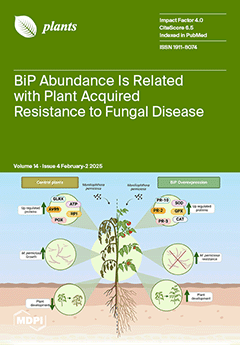This study addresses the low yield and fertilizer utilization efficiency of potatoes in the arid region of Xinjiang, Northwest China. The effect of a novel, fulvic acid-based specialized fertilizer for drip application on potato growth, development, yield, and fertilizer efficiency is investigated. The
[...] Read more.
This study addresses the low yield and fertilizer utilization efficiency of potatoes in the arid region of Xinjiang, Northwest China. The effect of a novel, fulvic acid-based specialized fertilizer for drip application on potato growth, development, yield, and fertilizer efficiency is investigated. The aim is to identify a suitable fertilizer formula for potato cultivation in Xinjiang and promote its demonstration and application, providing a theoretical basis for improving fertilizer efficiency and achieving stable, high yields in the region. The experiment was conducted with potato variety ‘Xisen 6’ using a field trial design, which included five treatments: no fertilizer (CK), conventional fertilizer (CF: N-P-K = 258-245-338 kg·ha
−1), formulated fertilizer 1 (F1: 120 g·L
−1 fulvic acid, N-P-K = 110-100-120 g·L
−1), formulated fertilizer 2 (F2: 60 g·L
−1 fulvic acid, N-P-K = 130-120-150 g·L
−1), and formulated fertilizer 3 (F3: 30 g·L
−1 fulvic acid, N-P-K = 170-150-130 g·L
−1). Agronomic traits, gas exchange parameters of leaves during the tuber expansion stage, and yield components at harvest were measured, along with the fertilizer use efficiency for each treatment. Results show that F1, F2, and F3 improved the potato plant height, stem diameter, aboveground dry weight, SPAD value, stomatal conductance (Gs), and yield. Among these, F2 significantly enhanced plant height, stem diameter, aboveground dry weight, and the accumulation of relative chlorophyll content (SPAD value) during the tuber expansion stage, increased photosynthesis, and further improved yield and fertilizer efficiency, resulting in a yield increase of 121.29% and 34.6% compared to CK and CF, respectively. Therefore, formula fertilizer F2 is identified as the optimal fertilization strategy for potato cultivation in Xinjiang. Its application has been further extended in demonstration trials. Field demonstration results show that F2 significantly increased potato yield, with a 14.79% yield increase compared to CK, proving its effectiveness in replacing conventional fertilizers and enhancing production.
Full article






